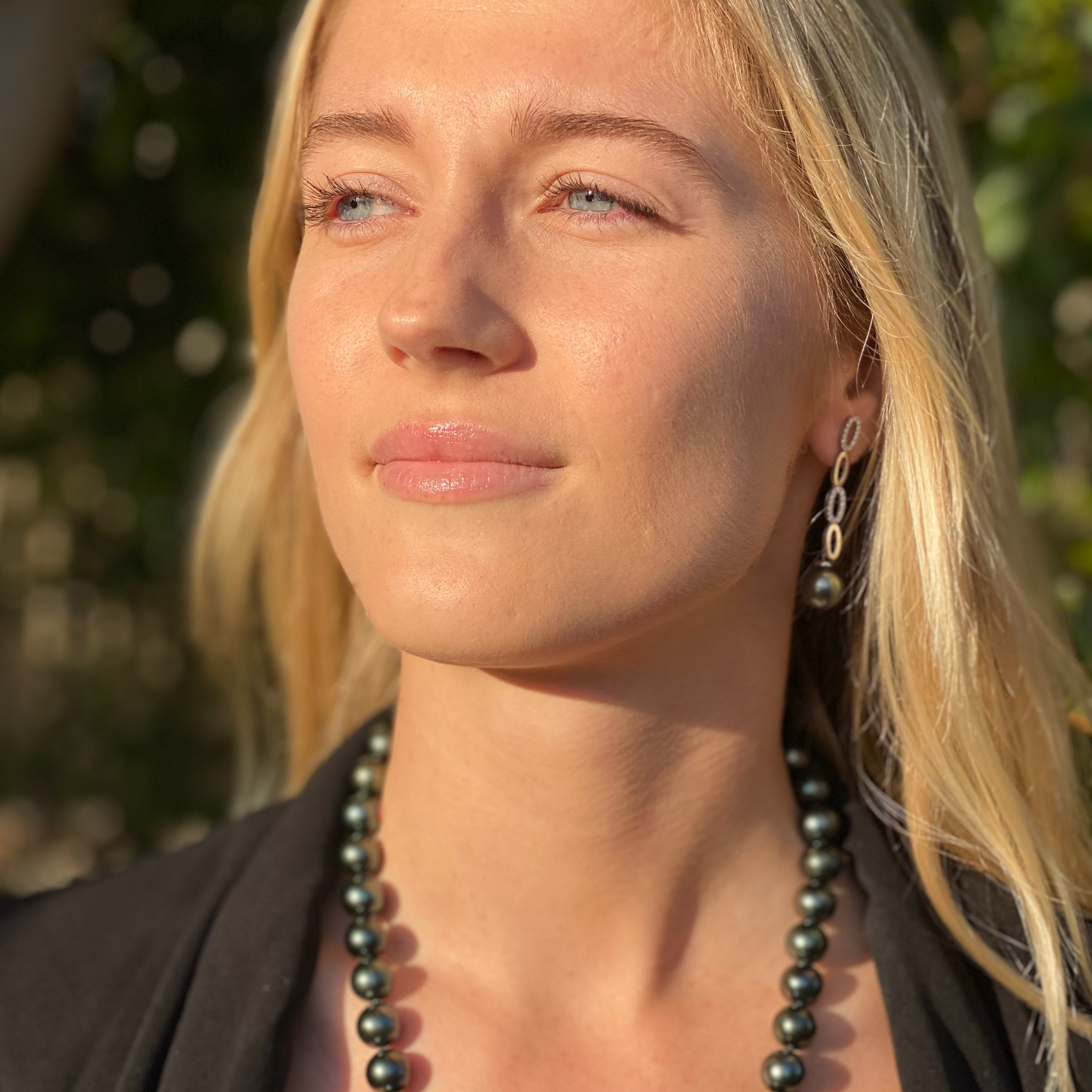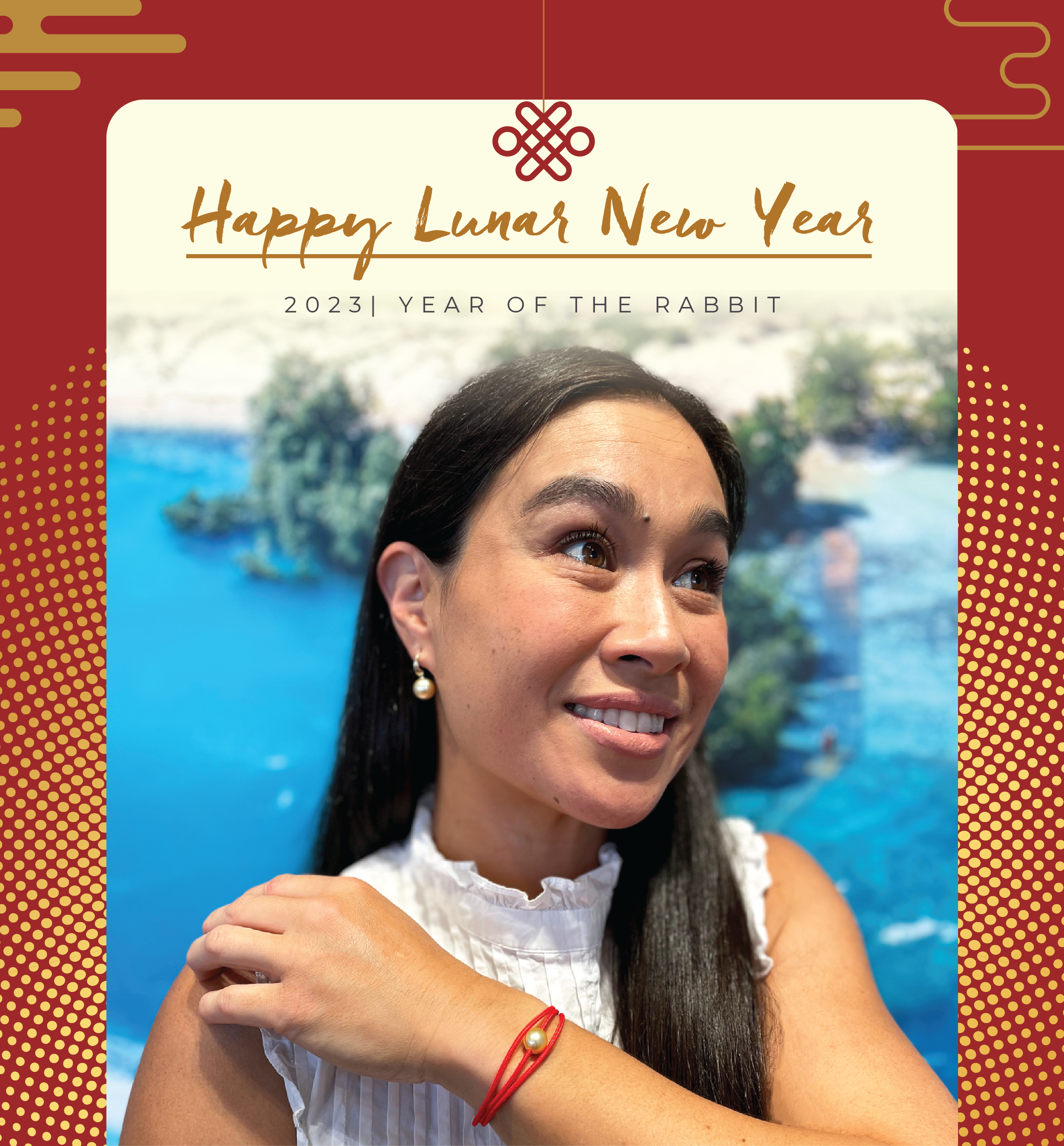Tahitian pearls are native to the French Polynesian area. These magnificent gems have been coveted for centuries due to their vast range of breathtaking hues, from silvers, dark greens, charcoal greys and caramel browns to the deepest of blacks, with a wide range of undertones and overtones. It is their vast colour range that makes the process of creating a strand quite difficult, requiring hundreds of loose pearls to create a single strand. Historically, the Tahitian pearl was worn by royalty alone, becoming known as the Pearl of Queens and the Queen of Pearls.
As a natural gem, all pearls are believed to carry spiritual meaning. Legends spanning back through Polynesian and Chinese history tell stories of black pearls being gifted as symbols of everlasting love and wisdom. To wear this jewel is said to attract love and wisdom into your life, and to gift a black pearl is to bestow these meanings to your loved one.
The word Pinctada is the biological classification for saltwater oysters that produce pearls. These oysters all have a mother of pearl (or “nacre”) layer in their shell and the species (most easily identified by the natural colour of this layer) determines the colour and the size range of the pearls. While our silver-lip oysters, or Pinctada maxima, produce our white (and occasionally golden), Australian South Sea Pearls, the black-lip oyster, or Pinctada margaritifera, produces the dark Tahitian Pearls. Both species of oysters take around 2 years to produce a single pearl, which can each come in a range of shapes, including round, button, drop, circle and baroque. Sizes for the Tahitian pearl vary from 8 – 14mm.
It is fascinating to compare the journey of the Australian South Sea Pearl with that of the Tahitian. In both Polynesia and Broome, the 1800’s saw the development of the pearling industry as the demand for mother of pearl items, particularly buttons, took off across the world. Following the invention of plastic buttons in 1958, the stronger and cheaper alternative caused the need for the pearling industry to adapt. Naturally found pearls are extremely rare, so in the late 1950’s, both Polynesia and Broome looked to Kokichi Mikimoto, a Japanese entrepreneur who is credited with creating the very first cultured pearl, for guidance as the industries began to transform from a mother of pearl focus to producing cultured pearls. Known as the father of modern pearling, Mikimoto brought his findings to Australia, and is credited with revolutionising the industry in Broome. It was a Japanese grafter, however, named M. Churoku Muroi who was the first to successfully apply grafting techniques to the Pinctada margaritifera, and by the mid-late 1960’s, both Broome and Polynesia were producing beautiful pearls.
The Tahitian pearl intrigues with its deep hues and sense of mystery. Its exotic charm best showcased in a stunning piece of jewellery. These spectacular gems are no longer only destined for royalty, but to make the wearer feel as though they are royalty. The Pearl of Queens is ready to reign once more.








Leave a comment
All comments are moderated before being published.
This site is protected by hCaptcha and the hCaptcha Privacy Policy and Terms of Service apply.